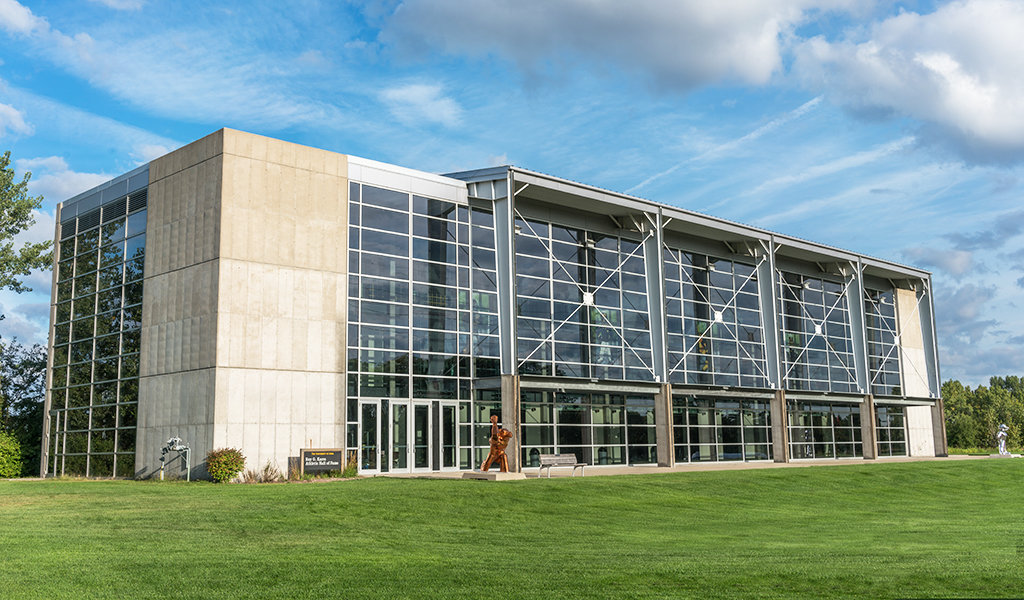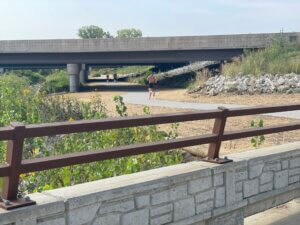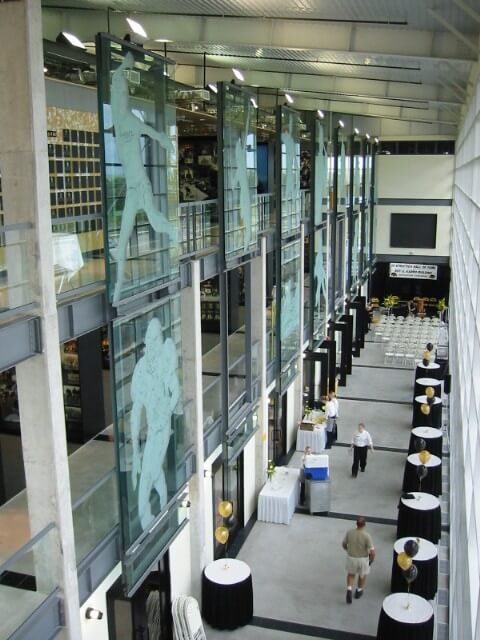
Contemporary Facility Honors University’s Sports Heroes
Throughout their storied history, the University of Iowa’s athletic teams have achieved remarkable successes on and off the fields and courts on which they compete. In the late 90s, fundraising efforts kicked off to construct a museum on campus that pays homage to the numerous legendary and influential Iowa Hawkeye athletes that have represented the University over the years. Named for private donor and Iowa alumnus, Roy G. Karro, the University of Iowa Athletics Hall of Fame building used styling and construction methods that closely mimic modern sporting venues.
As the Midwest’s premier structural engineering firm, Shuck-Britson was chosen to lead the engineering design efforts for this 26,000 square-foot sports history museum. Spanning three floors, the building includes two levels of museum exhibits, a three-story atrium, conference rooms, and a movie theater. On the third level, an interactive basketball court area constructed from flooring salvaged from the historic Iowa Field House allows young fans to practice shooting baskets and kicking field goals.
Rugged Concrete & Steel Construction Pays Homage to Sports Stadium Design
Constructed of cast in place concrete, exposed structural steel, and standing seam metal roofing, the form of the Karro Building is visually tied to the sporting facilities celebrated within. The attractive geometrical façade and the building’s horizontal configuration give the building much of its contemporary appearance.
The four square central bays, each with a smoked glass curtain wall and crisscrossed with structural tie rods, create a significant impression for visitors arriving at the museum along Mormon Trek Boulevard. This rigid steel framing with X-bracing was used around the building sections to reinforce the glass-walled structure. Behind the massive windows, the three-story atrium is oriented toward the University’s Finkbine Golf Course, taking full advantage of the scenic landscape during the day. At night, the light streaming from the building produces a stunning scene. A pair of concrete structures housing elevator shafts bookend the central bays and complement the building’s geometric shape.
Building Site Creates Unique Challenges & Provides “Green” Opportunities
The Hall of Fame Building’s location is adjacent to a protected wetland and was developed with green architectural practices in mind. Stormwater runoff is controlled by a detention pond that also maintains an ecological balance between plant and animal wildlife. Landscaping with native prairie grasses and the use of drainage swales in the parking lot also minimize the Hall of Fame’s environmental impact.
While the design of the University of Iowa Athletics Hall of Fame is contemporary, it recalls the spectrum of athletic venues in both form and choice of materials. And it’s just one example of how the Shuck-Britson team can rise to the occasion and develop cutting-edge structural designs. As a subsidiary of Snyder & Associates, the structural engineering professionals with Shuck-Britson have the full weight of a proven team of environmental scientists, technicians, planners, and civil engineers backing every project.







